Save our planet!
In many countries today, obligatory energy certification has been introduced which directly influences the market value of the building. A building’s operating cost depends very much on its energy performance – the heating / cooling effectiveness and hot water supply. High energy consumption in most cases is caused by excessive heat / cooling loss through a building’s walls. How well a building is insulated is seen in the building’s annual energy consumption.
Walls are an area subjected to the process of heat / cooling (energy) and moisture migration, as a wall separates the climatic conditions between the inside and outside. Heat always transfers itself from an area of higher temperatures to cooler areas. For example, in the winter heat transfers from the inside to the outside cooler temperatures, and visa versa where in hot climates the cooler typically air conditioned air attracts the outside heat through the wall.
It is not only the walls that are responsible for the escaping heat / cooling loss, but also the roof, ventilation areas such as chimney’s, and foundations. The following diagrams clearly show how a buildings external walls contribute to heat / cooling loss.
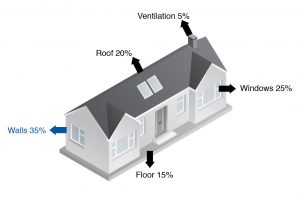 |
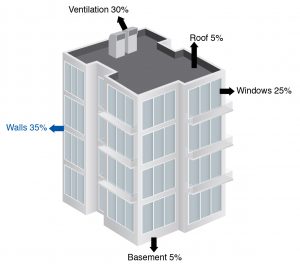 |
| SINGLE FAMILY HOME | MULTI-STORY BUILDING |
The amount of energy required to maintain a comfortable indoor temperature is much higher in the case of non-insulated walls. In thermally insulated walls the biggest temperature difference appears inside the insulated materials, which then provides good temperature control on the indoor environment.
The following diagrams demonstrate how external walls contribute to total heat loss, regardless of the type of building. Hence the external walls, including cold joints such a balconies etc., need to be insulated by external insulation systems. Terraco EIFS is able to reduce the flow of heat / cooling through the walls.
Cold Climates
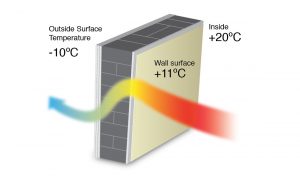 |
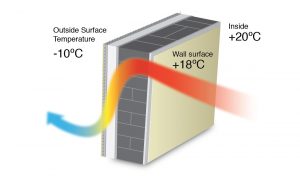 |
| No thermal insulation causes a cooling down of the internal wall surface. | Thermal insulation causes an increase in temperature of the internal wall surface. |
Hot Climates
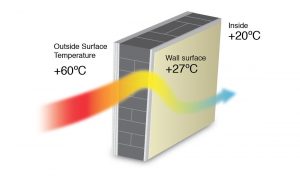 |
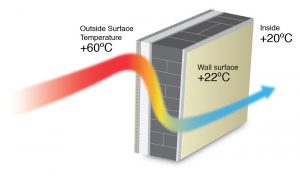 |
| No thermal insulation causes the internal wall surface to heat up. | Thermal insulation causes a decrease in the temperature of the internal wall surface. |
The decrease in fuel consumption in thermally protected buildings have positive ecological effects. With the consumption of non-renewable energy resources reduced, less CO2 emissions are released which are responsible for the greenhouse effect of global warming. Terraco EIFS provides the solution – Save energy. Save money!
In many countries where EIFS is used, the drive towards energy efficiency in buildings is legislation driven. All buildings have to have an Energy Rating Certificate which will classify it according to its energy efficiency. This certificate must be shown to a new purchaser prior to making an offer, hence it will have a direct effect on the price.
In Europe, as per the KYOTO Protocol, there is strict control on U-Values for all new building permits. Many of these countries also have various financial incentive schemes in place to improve energy efficiency of existing houses. As a result, these incentive schemes have resulted in a huge growth in the EIFS renovation market throughout the colder areas of Europe.